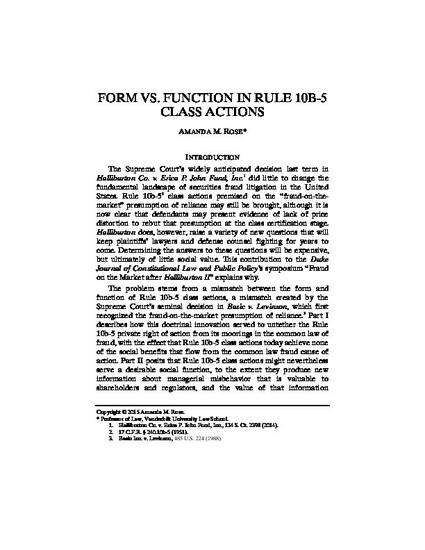
- securities fraud,
- class actions,
- deterrence,
- whistleblowing
The Supreme Court’s widely anticipated decision last term in Halliburton Co. v. Erica P. John Fund, Inc. did little to change the fundamental landscape of securities fraud litigation in the United States. Rule 10b-5 class actions premised on the “fraud-on-the-market” presumption of reliance may still be brought, although it is now clear that defendants may present evidence of lack of price distortion to rebut that presumption at the class certification stage. Halliburton does, however, raise a variety of new questions that will keep plaintiffs’ lawyers and defense counsel fighting for years to come. Determining the answers to these questions will be expensive, but ultimately of little social value. This contribution to the Duke Journal of Constitutional Law and Public Policy’s symposium “Fraud on the Market after Halliburton II” explains why.
Available at: http://works.bepress.com/amanda-rose/9/
